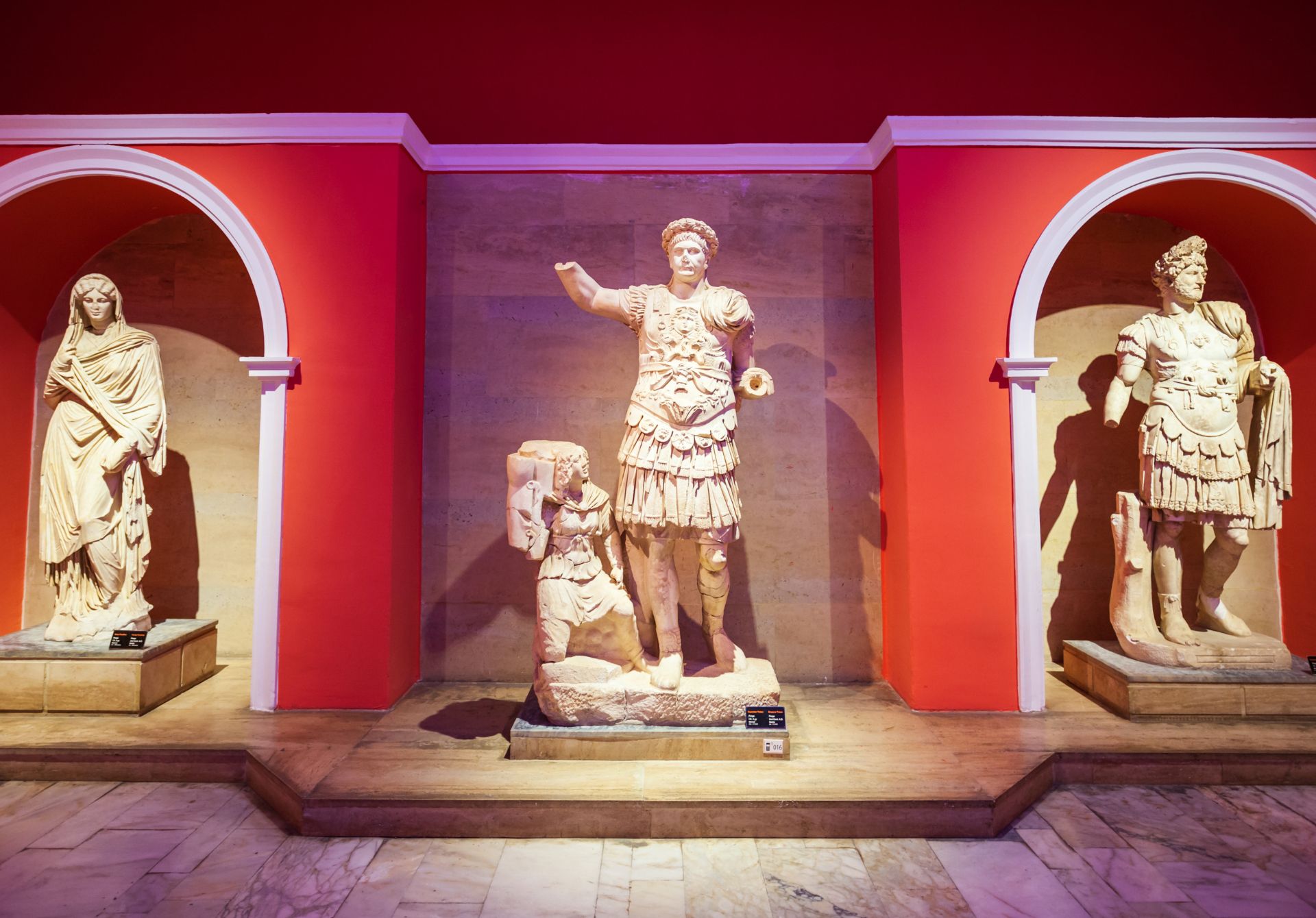Nestled in the heart of Turkey’s Mediterranean coast, the Antalya Archaeological Museum stands as one of the country’s most prestigious cultural institutions. Whether you’re a history buff, cultural enthusiast, or simply looking for an enriching experience during your Turkish getaway, this world-class museum offers an unforgettable journey through millennia of civilization.
A Museum Born from Passion and Protection
The story of the Antalya Archaeological Museum is as fascinating as its collections. Established in 1922 during Italian military occupation, the museum was founded by Süleyman Fikri Bey, who appointed himself as voluntary curator to prevent Italian archaeologists from removing archaeological treasures from the city. What began as a desperate attempt to preserve local heritage has evolved into one of Turkey’s most celebrated museums, winning the “Special Prize of the Museum of the Year of the Council of Europe” in 1988.
This prestigious recognition wasn’t awarded lightly – the museum has earned international acclaim for its exceptional curation and preservation efforts, drawing visitors from around the globe who seek to experience Turkey’s rich archaeological heritage.
Spectacular Collections That Tell Ancient Stories
The museum’s crown jewels are undoubtedly its Roman sculptures, many of which were discovered during excavations of nearby Roman cities such as Perge. These remarkable artifacts showcase the artistic mastery of ancient civilizations and provide visitors with tangible connections to the past.
What makes this museum particularly special is its diverse range of exhibits that span different historical periods. Visitors will encounter:
- Prehistoric Artifacts: Including Neanderthal skeleton fragments discovered in the Karain Cave, representing some of the earliest human activities in the region
- Classical Sculptures: Notable pieces include the Statue of Emperor Hadrian, the Statue of the Dancing Woman, and the Statue of the Priestess of Artemis
- Byzantine Treasures: Artifacts that showcase the artistic zenith of the Byzantine period
- Ottoman Heritage: Traditional costumes, weapons, tiles from the Seljuk and Ottoman periods, manuscripts, candlesticks, and an extensive collection of wooden spoons
Interactive Experiences for Every Visitor
The museum goes beyond traditional displays to create engaging experiences for all ages. A hall at the entrance has been organized as a Children’s Museum, which is the first of its kind, making it particularly family-friendly. Young visitors can explore toys that children used to play with many years ago and experience a corner designed as a typical Anatolian bazaar.
For adult visitors, the museum features recreated interiors of typical household settings, allowing guests to step into authentic historical environments. The chronological and thematic organization of exhibits ensures that visitors can follow the progression of civilizations seamlessly.
Practical Information for Your Visit
Planning your visit to the Antalya Archaeological Museum is straightforward, but knowing the details can enhance your experience significantly.
Opening Hours:
- Summer Period (April 1 – October 31): Daily from 8:30 AM to 7:00 PM
- Winter Period (November 1 – March 31): Daily from 8:30 AM to 5:30 PM
Admission and Accessibility: While ticket prices vary, recent visitor reports suggest costs around 15 Euros per person, though prices may differ for locals and tourists. The museum is located in the Konyaaltı district of Antalya, about 2 kilometers from the city center, making it easily accessible by public transport or taxi.
The facility offers modern amenities including audio guides, car parking, a shop, cafe, and restrooms, ensuring a comfortable visit for all guests.
What Makes This Museum Special for Travelers
The sculptures and other artifacts are exhibited both indoors and in open air galleries, with modern and spacious exhibition spaces. This thoughtful design allows for both intimate viewing of delicate artifacts and grand displays of larger pieces.
As an added bonus, visitors often encounter white peacocks wandering in the gardens outside, creating a magical atmosphere that enhances the overall museum experience. These beautiful creatures add an unexpected element of natural beauty to your cultural journey.
The museum’s international reputation means you’ll be visiting a world-class institution that rivals the finest museums globally. The museum’s rich collections include sculptures, mosaics, sarcophagi, and archaeological finds, with the sculptures brought from the ancient city of Perge being particularly notable.
Your Cultural Adventure Awaits
The Antalya Archaeological Museum represents far more than a typical tourist attraction – it’s a gateway to understanding the rich tapestry of civilizations that have called this Mediterranean region home for thousands of years. From Neanderthal remains to Byzantine masterpieces, from Roman sculptures to Ottoman treasures, the museum offers a comprehensive journey through time that few institutions can match.
Whether you’re planning a day trip from your hotel or incorporating the museum into a longer cultural tour of Antalya, this exceptional facility provides the perfect blend of education and inspiration. The combination of world-class artifacts, modern presentation, family-friendly features, and beautiful surroundings makes it an essential stop for any discerning traveler.
For those passionate about history, culture, and authentic travel experiences, the Antalya Archaeological Museum delivers on every level. It’s not just about seeing ancient artifacts – it’s about connecting with the human stories behind them and gaining a deeper appreciation for the incredible heritage of this remarkable region. Plan your visit today and prepare to be amazed by the wonders that await within these walls.

